23 March 2014
Edinburgh: Old Town and older volcanoes
Posted by Jessica Ball
There’s been a bit of silence on the blog lately because I’ve been sidetracked by that EOS article, and the fact that I briefly fled the country. (Not with government agents on my heels or anything like that!) My PhD advisor relocated to Scotland last year, and I finally had a chance to visit her in Edinburgh. And wow, what a great place for a geologist to go!
Scotland in general is a geologic tourist’s dream, but Edinburgh in particular is a great spot for anyone who’s into history of any kind. And I have to admit I’ve wanted to visit ever since I saw it featured in the beginning of the original Journey to the Center of the Earth (the good one with James Mason and Gertrude the duck). I mean, who wouldn’t want to recreate that awesome opening shot where James Mason is walking through a parade of bagpipers? (Just kidding. Bagpipes are loud. But I did find the street – it’s Mound Place – and completely geeked out while I slogged up it.)
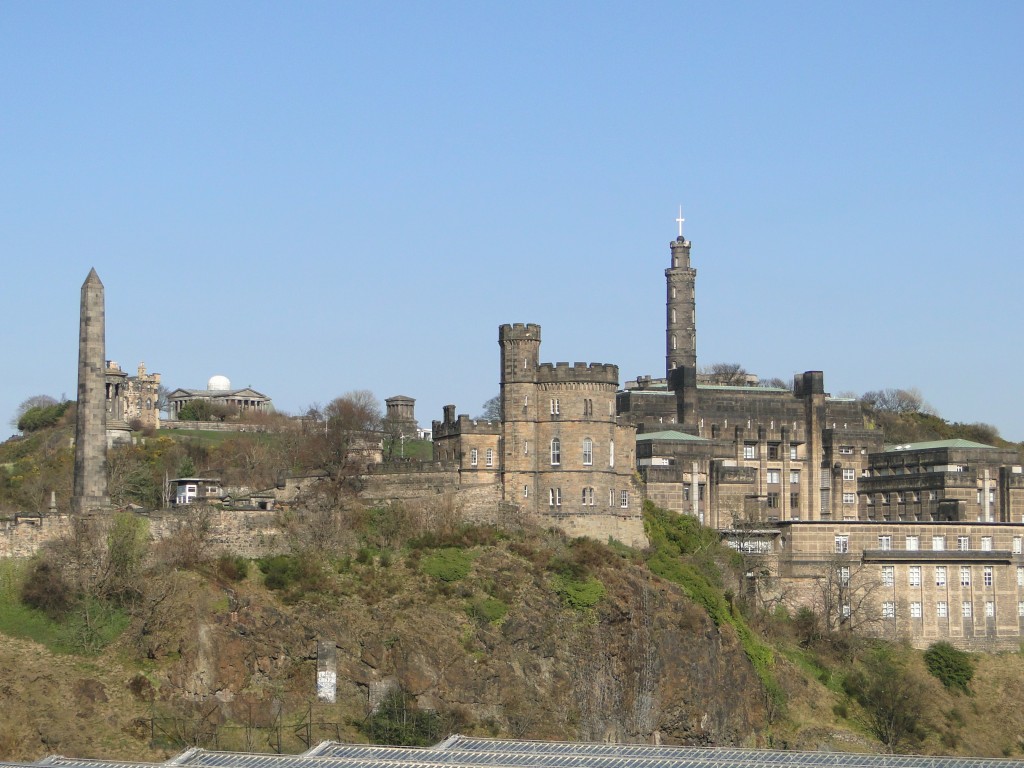
Calton Hill, home of the Robert Burns Monument, the City Observatory, the Nelson Monument and the old Governer’s House of the Old Calton Jail.
Edinburgh sits atop Carboniferous sandstones that formed in a setting of shallow seas and coastal plains (basically, a beach), and some of the more prominent landmarks take advantage of a series of volcanic features. Arthur’s Seat (below, in the distance) is the tilted and eroded remnants of a 350-million-year-old basaltic volcano, and is flanked by a sill that forms the Salisbury Crags. The Edinburgh Castle sits on top of Castle Rock, a doleritic volcanic plug; Cramond Island, in the Firth of Forth, is another bit of dolerite.
The Castle at the heart of Old Town (in Edinburgh, Old Town means the medieval to mid-18th-century streets and buildings and New Town means the bit built between 1765 and 1850) is perched on top of a plug of dolerite. It’s an extremely effective location; the castle has never been successfully captured by an invading army, although in 1296 it fell to an English siege and Robert the Bruce’s nephew Thomas Randolph snuck some warriors up the cliffs in 1314 to retake it from the English. But it’s no wonder that no one else had much success, because those cliffs are high.
The Castle holds the Honours of Scotland (the crown jewels and the Stone of Scone, which used to be in Westminster Abbey and was…ahem…relocated for a time in 1950 before eventually being given to the Scots on permanent loan in 1996). The site has been used as a fortification of sorts since 900 BC, but the current buildings mostly date to the 16th century.
If I ever decide to develop an evil mad scientist lair that’s not underground, I’m putting it on top of a volcanic plug like this one. Seriously, if I were a medieval invader I wouldn’t even bother trying to get up this hill and attack anyone, because a) you’d be a pincushion for arrows long before you got to the top and b) you’d be bloody tired.
Here’s a close-up view of some of the rock the Castle is built on, a dolerite (I’ve also seen it called “microgabbro”):
The top of the Royal Mile has some other nifty spots for a geologist to visit. Nearby In the Greyfriars Kirkyard (a “kirk” is a church), there’s a grave worthy of a pilgrimage by any geologist: that of 18th-century geologist James Hutton. Hutton was pretty much the father of modern geology; he came up with the theory of uniformitarianism, the assumption that the same processes that produce geologic and landscape features now have always operated that way, and we can interpret past events from our knowledge of current processes. (I’ll talk about him more in the next post about Arthur’s Seat.)
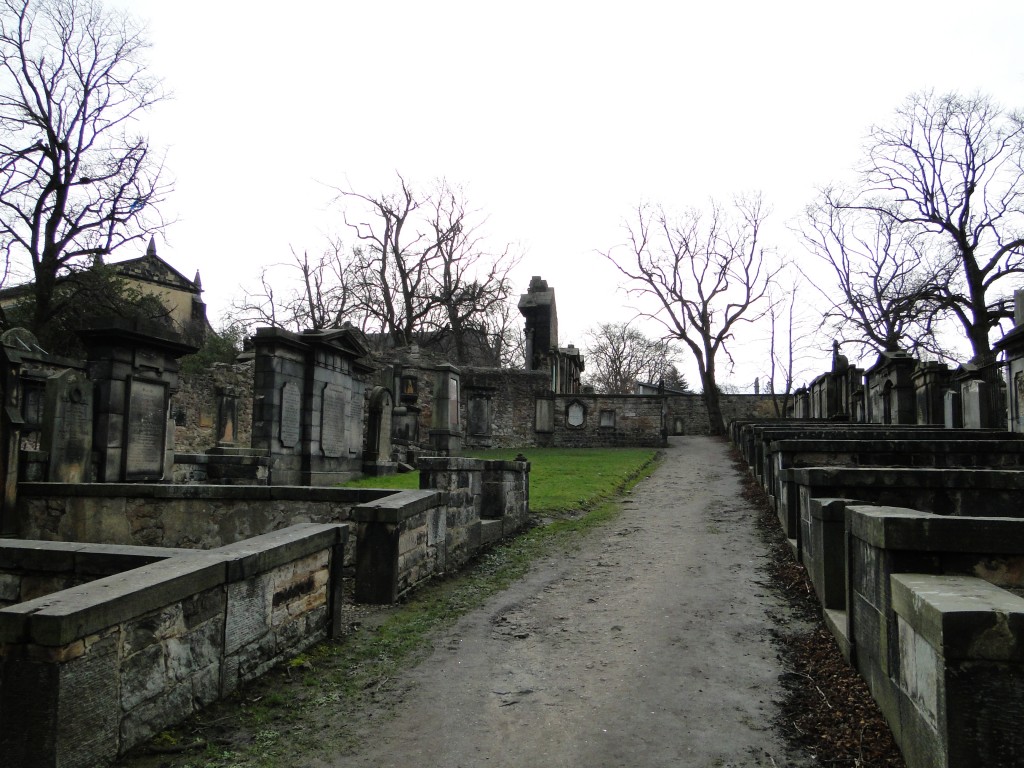
Graves in the Greyfriars kirkyard – mostly sandstone, which doesn’t hold up all that well to Scottish weather.
Unfortunately, Hutton is buried in the part of the yard which was used as a prison at some point, so it was only open for special tours and I couldn’t see the grave itself. (Given the British propensity for burying people in places where they’re easily tripped over, I suppose this saved me from doing what I did in Westminster Abbey, and stepping on one of the other founding fathers of geology. Although I suppose there is a kind of irony in a modern geologist literally standing on top of a past one…)
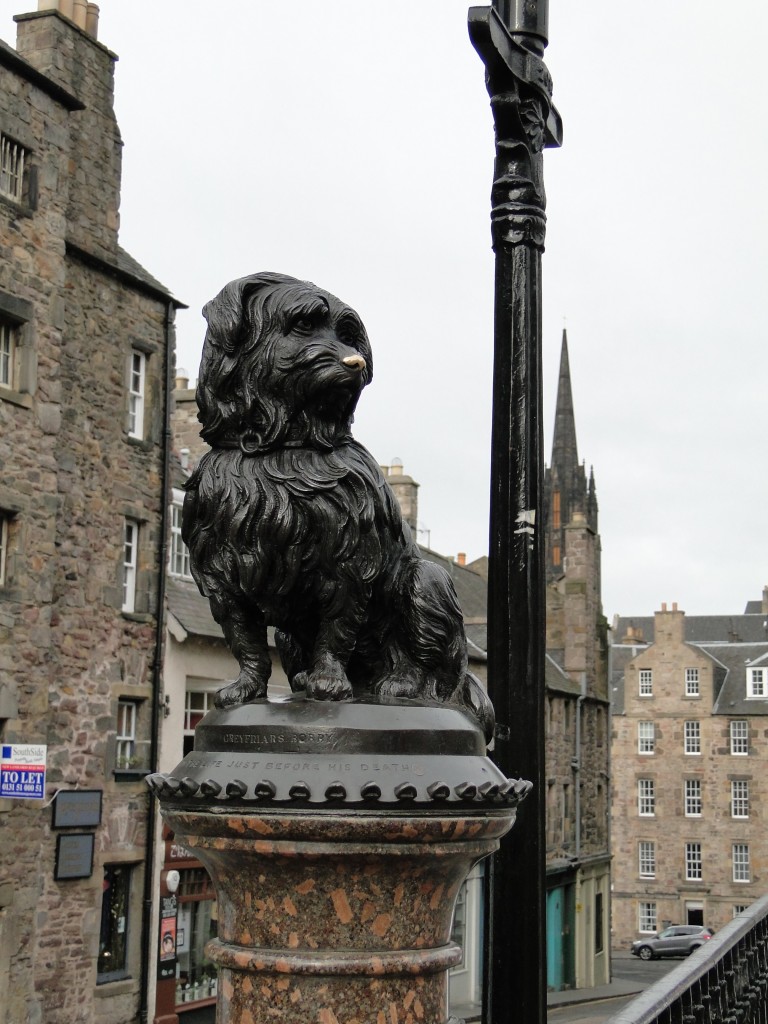
Poor Bobby’s nose has to be replaced regularly because people rub it for luck so often it falls off. I guess that’s mechanical erosion?
Another neat story from Greyfriars is of Greyfriars Bobby, a 19th-century dog who became famous for supposedly guarding the grave of his master, a policeman (also known as a bobby), until he died 14 years later. Bobby’s statue sits just outside the church and next to a pub where Bobby used to be welcomed for food and water, and though the brass dog is the feature of note, it also sits on top of a really lovely granite with some big old k-feldspar phenocrysts.
While the volcanic features of Edinburgh are prominent and striking, the architecture atop them is pretty interesting, too. A lot of the older buildings in the city are made of local sandstone, which is either red or grey; chemical weathering or just plain staining from soot darkens it up a bit, but in some places you can see the nice rusty or pale grey coloring.
I expect it’s probably due to a number of factors, including air pollution from coal burning in the 19th century and other industrial pollutants later on, as well as Edinburgh’s generally wet climate. Stone “decay” is a significant problem, as I’ll point out in another post about a side trip I made to Rosslyn Chapel. But it does make for an interesting kind of patina on the buildings, which gives them a character you don’t see much here in the US. (Not to mention that we just don’t have that many pre-18th-century buildings around in this country.)
Next up: Arthur’s Seat, James Hutton and the birth of uniformitarianism.


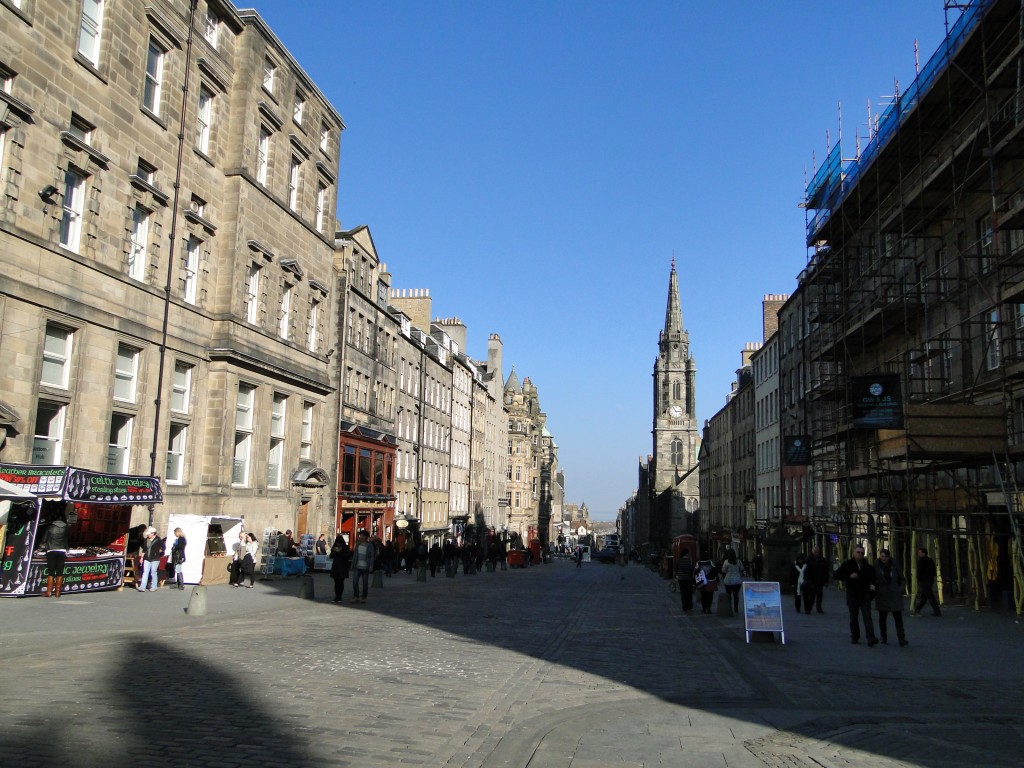
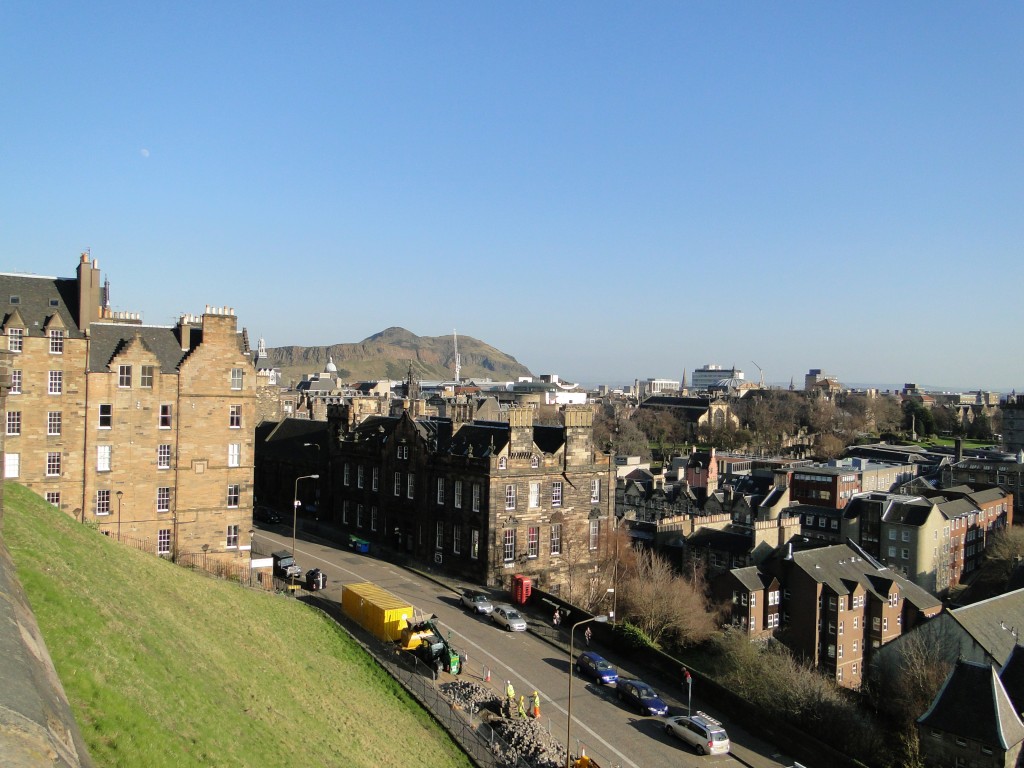
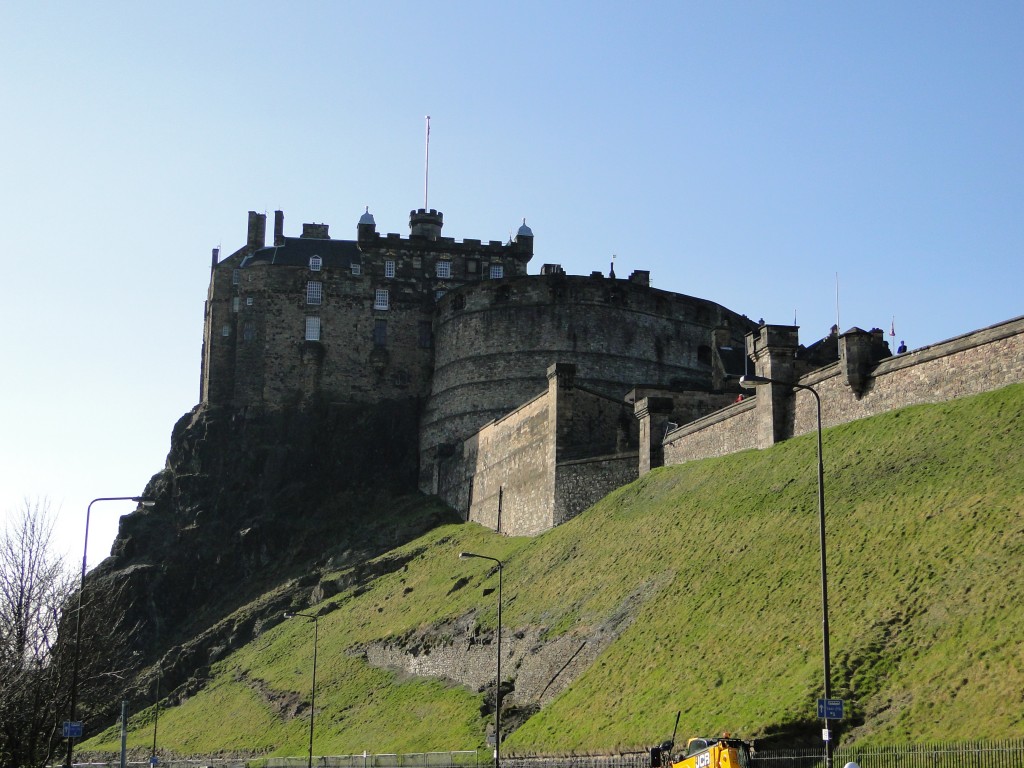

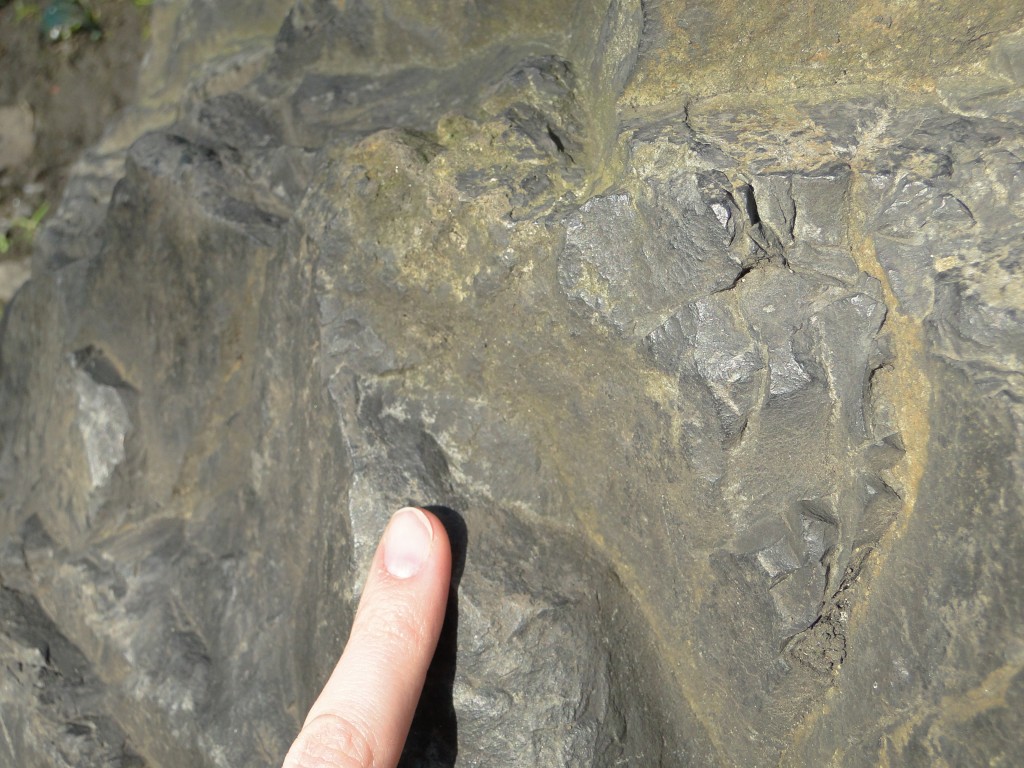
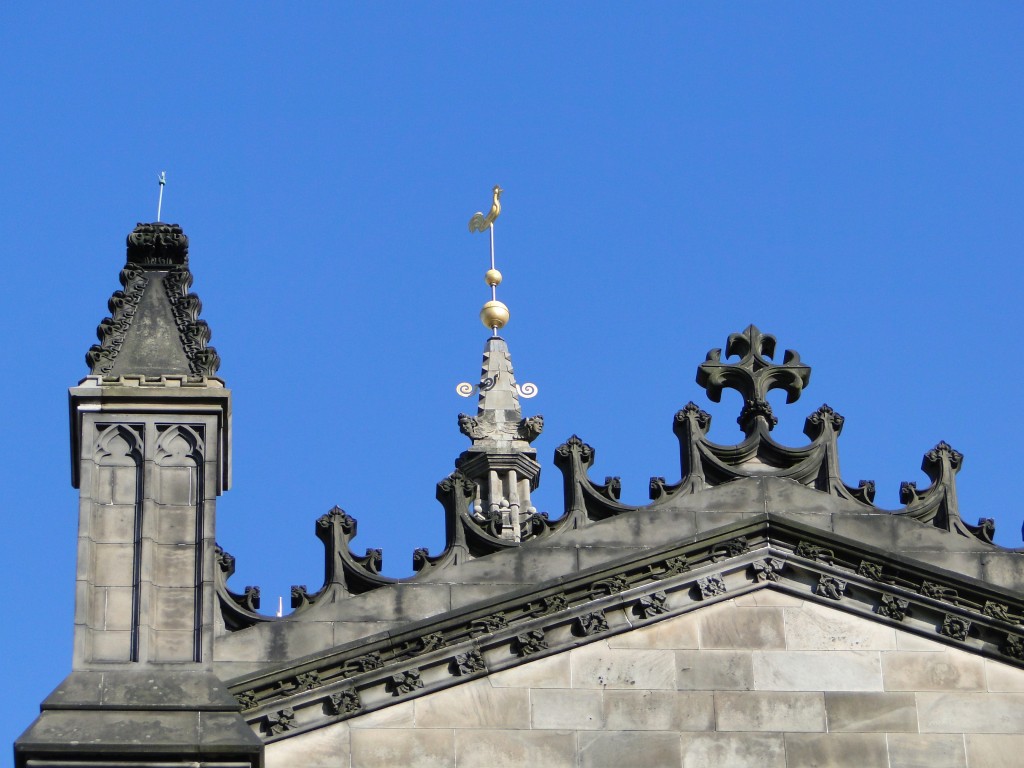
 Jessica Ball is a volcanologist at the U.S. Geological Survey, researching volcanic hydrothermal systems and stability, and doing science communication for the California Volcano Observatory. She previously worked at the Geological Society of America's Washington DC Policy Office, learning about the intersection of Earth science and legislative affairs. Her Mendenhall postdoc and PhD focused on how water affects the stability of volcanoes, and involved both field investigations and numerical modeling applications. Her blogging covers a range of topics, from her experiences in academic geosciences to science outreach and communication to her field and lab work in volcanology.
Jessica Ball is a volcanologist at the U.S. Geological Survey, researching volcanic hydrothermal systems and stability, and doing science communication for the California Volcano Observatory. She previously worked at the Geological Society of America's Washington DC Policy Office, learning about the intersection of Earth science and legislative affairs. Her Mendenhall postdoc and PhD focused on how water affects the stability of volcanoes, and involved both field investigations and numerical modeling applications. Her blogging covers a range of topics, from her experiences in academic geosciences to science outreach and communication to her field and lab work in volcanology.
Brilliant write-up! I live on the opposite side of Scotland in Glasgow which has a much different feel to Edinburgh. Glasgow’s old tenements are mainly red sandstones and these give the city a much different character to Edinburgh.
I love Edinburgh too.
Glasgow man as well. Currently reading “The Man Who Found Time” by Jack Repcheck about James Hutton The Father of Geology. A fascinating biography. Have spent time in Edinburgh following Hutton’s adventures in exploring the origins of some spectacular features, e.g. Arthur’s Seat.
Jim
Hey Jess,
Neato blog post. I will get there some day. By the way, the pillar that the cute dog is sitting on looks to be more like syenite. It’s too pink to be straight granite.
Dawn
I think the Greyfrairs Bobby pillar is Shap Granite, a type of granite from Shap in the Lake District in England, famous for its large pink k-feldspar phenocrysts and also known as ‘pink granite’. It is used throughout the UK as a building stone and is very commonly seen around any town centre!